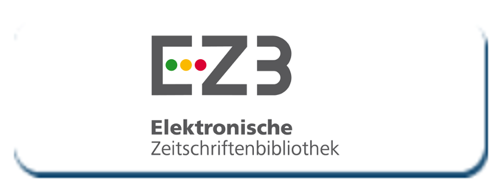Endosurgical treatment of newborns and young children with posterior urethral valves
DOI:
https://doi.org/10.5281/zenodo.8104913Keywords:
Acute kidney injury, chronic kidney disease, Cohen's operation, laparoscopic pneumovesicum, posterior urethral valves, transurethral incisionAbstract
Objective: Posterior urethral valves are a rare but the most common cause of lower urinary tract obstruction in male newborns and infants. Patients are at high risk of recurrent urinary tract infections, acute kidney injury and chronic kidney disease. The aim of this study was to present our experience of transurethral incision of posterior urethral valves in newborns as a gold standard of treatment.
Materials and methods: We conducted a case-series of patients with posterior urethral valves who underwent transurethral incision during 2017–2021. We analyzed clinical characteristics of patients, recurrence, and complications during a follow-up of 3-12 months.
Results: Of 26 patients who underwent transurethral incision of posterior urethra valves 14 had concomitant vesicoureteral reflux of II-V degrees and 12 – obstructive megaureter. Eight children received endoscopic injections (7 ureters) and ureteral stenting (5 ureters). Six infants (9 ureters) had Cohen's operation of which 4 patients had ureteric reimplantation using laparoscopic pneumovesicum and 2 patients underwent open procedure. In 4 cases we performed laparoscopic nephroureterectomy. In 12 children a spontaneous regression of VUR and megaureter within 3 months after TUI were observed. Four children developed chronic kidney disease of 1-2 stages.
Conclusions: Early diagnosis and surgery treatment of posterior urethra valves in newborns and infants provide excellent outcomes in most patients. Cystourethroscopy with the transurethral incision is highly recommended to be performed in the neonatal period as the spontaneous recovery of concomitant vesicoureteral reflux and megaureter are quite often.
References
Wu CQ, Traore EJ, Patil D. Role of a preoperative catheter regimen in achieving early primary endoscopic valve ablation in neonates with posterior urethral valves.J Urol. 2021;205(6):1792-7.
Tambo FF, Tolefac PN, Ngowe M. Posterior urethral valves: 10 years audit of epidemiologic, diagnostic and therapeutic aspects in Yaoundé gynaeco-obstetric and paediatric hospital. BMC Urol. 2018;18(1):46.
Chan MT, Chan EE, Ng YH. Outcome of boys with posterior urethral valves from a single tertiary hospital in Singapore. ANZ J Surg. 2022;92(5):1159-64.
Brownlee E, Wragg R, Robb A. Current epidemiology and antenatal presentation of posterior urethral valves: Outcome of BAPS CASS National Audit. J Pediatr Surg. 2019;54(2):318-21
Talati AN, Webster CM, Vora NL. Prenatal genetic considerations of congenital anomalies of the kidney and urinary tract (CAKUT). Prenat Diagn. 2019;39(9):679-92.
Çelakil EM, Ekinci Z, Yücel BB. Outcome of posterior urethral valve in 64 children: a single center's 22-year experience Minerva. Urol Nefrol. 2019;71(6):651-6.
Chua ME, Ming JM, Carter S. Impact of adjuvant urinary diversion versus valve ablation alone on progression from chronic to end stage renal disease in posterior urethral valves: a single institution 15-year time-to-event analysis. J Urol. 2018;199(3):824-30.
Berte N, Vrillon I, Larmure O, Gomola V, Ayav C, Mazeaud C, et al. Long-term renal outcome in infants with congenital lower urinary tract obstruction. Prog Urol. 2018;28(12):596-602.
Coquillette M, Lee RS, Pagni SE. Renal outcomes of neonates with early presentation of posterior urethral valves: a 10-year single center experience. J Perinatol. 2020;40(1):112-7.
Demirkan H, Yeşildal C. Serum creatinine levels in cases of posterior urethral valve: 29 years experience of a pediatric urology reference center. Low Urin Tract Symptoms. 2020;12(3):274-7.
Harper L, Waubant A, Vignes J. Can quantity of amniotic fluid reliably predict postnatal renal function in boys with posterior urethral valves: a decision curve analysis. Prenat Diagn. 2017;37(9):931-4.
Buffin-Meyer B, Tkaczyk M, Stańczyk M. A single-center study to evaluate the efficacy of a fetal urine peptide signature predicting postnatal renal outcome in fetuses with posterior urethral valves. Pediatr Nephrol. 2020;35(3):469-75.
Brown BP, Simoneaux SF, Dillman JR, ACR Appropriateness Criteria® Antenatal Hydronephrosis-Infant. J Am Coll Radiol. 2020;17(11S):S367-9.
Vasconcelos MA, Simões E Silva AC, Dias CS, Gomes IR, Carvalho RA, Figueiredo SV, et al. Posterior urethral valves: comparison of clinical outcomes between postnatal and antenatal cohorts. J Pediatr Urol. 2019;15(2):167.
Vieira EL, Rocha NP, Bastos FM. Posterior urethral valve in fetuses: evidence for the role of inflammatory molecules Pediatr Nephrol. 2017;32(8):1391-400.
Herbst KW, Tomlinson P, Lockwood G. Survival and kidney outcomes of children with an early diagnosis of posterior urethral valves. Clin J Am Soc Nephrol. 2019;14(11):1572-80.
Rocha NP, Bastos FM, Vieira EL. The protective arm of the renin-angiotensin system may counteract the intense inflammatory process in fetuses with posterior urethral valves. J Pediatr (Rio J). 2019;95(3):328-33.
Long CJ, Bowen DK. Predicting and modifying risk for development of renal failure in boys with posterior urethral valves. Curr Urol Rep. 2018;19(7):55.
Wragg R, Brownlee E, Robb A. Tubular and glomerular biomarkers of renal tissue function in the urine of fetuses with posterior urethral valves. J Pediatr Urol. 2022;S1477-5131(22)00116-4.
Sarhan OM, Wadie B, Al-Kawai F. Bladder function in children with posterior urethral valves: impact of antenatal versus postnatal diagnosis. Int Braz J Urol. 2022;48(1):78-86.
Lundar L, Aksnes G, Morkrid L. Prenatal extravasation of urine seems to preserve renal function in boys with posterior urethral valves. J Pediatr Urol. 2019;15(3):241.e1-e7.
Chandran H, Knight M, McCarthy L. The postnatal management of boys in a national cohort of bladder outlet obstruction. J Pediatr Surg. 2019;54(2):313-7.
Farrugia MK. Fetal bladder outflow obstruction: Interventions, outcomes and management uncertainties. Early Hum Dev. 2020;150:105189.
Sen S, Arunachalam P, Sam CJ. Non-obstructive, non-refluxing uretero-colonic anastomosis by colonic sero-muscular excision and extra mural peri-ureteric wrap - A new technique in 17 children. J Pediatr Urol. 2021;17(1):99.e1-e7.
Downloads
Published
How to Cite
Issue
Section
License
Copyright (c) 2023 Journal of Clinical Trials and Experimental Investigations

This work is licensed under a Creative Commons Attribution 4.0 International License.
![]() The journal is licensed under a Attribution4.0 International (CC BY 4.0).
The journal is licensed under a Attribution4.0 International (CC BY 4.0).











